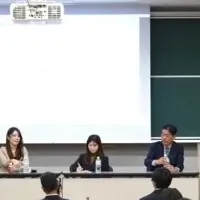
NASA's SpaceX Crew-9 Completes Groundbreaking Research Before Returning to Earth
NASA's SpaceX Crew-9 Splashdown: A Journey of Scientific Discovery
NASA's ninth rotational crew mission aboard SpaceX's Dragon spacecraft, known as Crew-9, has successfully concluded, returning to Earth on a key assignment that spanned several months aboard the International Space Station (ISS). The astronauts splashed down off the Florida coast, marking the end of a significant chapter in space exploration and research.
Achievements of Crew-9
Throughout their mission, Crew-9 members, including NASA astronauts Nick Hague, Suni Williams, and Butch Wilmore, alongside Roscosmos cosmonaut Aleksandr Gorbunov, participated in numerous scientific investigations aimed at benefitting humanity. Their work was spearheaded by the ISS National Laboratory, which provided critical support for a variety of research projects that focused on health, technology, and more.
One notable project involved collaboration with Bristol Myers Squibb, where efforts were made to grow protein crystals in microgravity. This endeavor could potentially lead to more effective medications as microgravity conditions often result in better-structured crystals than those grown on Earth. This innovation brings the world a step closer to advancements in therapeutic manufacturing.
In another pioneering investigation led by Sachi Bio using brain organoids, the team targeted neurodegenerative diseases, such as Alzheimer's and Parkinson’s. By examining the effects of a novel drug in space, researchers hope to uncover new treatments that could significantly improve the quality of life for millions globally.
Moreover, projects funded by the U.S. National Science Foundation showcased the potential of microgravity to refine our understanding of human health. For instance, researchers studied mucus's behavior in the human airway, which could transform medication delivery methods for respiratory conditions.
Engaging the Next Generation
Not only did Crew-9 engage in cutting-edge research, but they also encouraged student involvement in science. The Genes in Space initiative successfully launched its 11th experiment from a student, Isabel Jiang, now a Yale freshman. This RNA research aims to illuminate the genetic risks astronauts encounter during space missions.
Additionally, the Student Spaceflight Experiments Program (SSEP) facilitated 38 different community projects. Engaging students in original experiments on topics ranging from plant biology to pest management using eco-friendly methods emphasizes the importance of STEM education.
The Future of Scientific Research in Space
The ISS National Lab continues to offer unique opportunities for research that cannot be conducted on Earth, fostering an environment that promotes educational initiatives for future scientists. It serves as a platform for non-NASA entities, including academic institutions and private companies, to explore and innovate, paving the way for commercial endeavors in low Earth orbit.
As Crew-9 heads back to Earth, their contributions mark a momentous step forward in not only understanding our planet and our health but also in laying the groundwork for sustainable space economies. The data collected, and lessons learned, will undoubtedly influence future missions and offer insights that can lead to real-world applications back home.
To delve deeper into ISS National Lab projects, upcoming missions, and the impact of Crew-9's research, visit the ISS National Lab's official website.
Conclusion
The successful return of Crew-9 illustrates both the challenges and rewards of human space exploration. As they transition back to life on Earth, the legacy of their work will continue to resonate, creating paths to new discoveries and solutions for challenges that face society today. The exploration of space not only enhances our scientific understanding but inspires future generations to reach for the stars.
Topics Other)










【About Using Articles】
You can freely use the title and article content by linking to the page where the article is posted.
※ Images cannot be used.
【About Links】
Links are free to use.